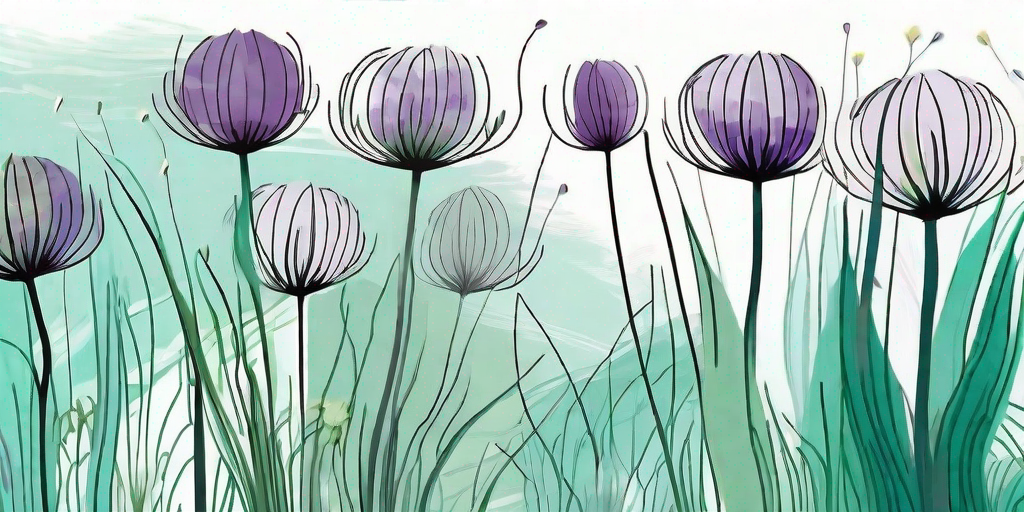
If you've ever looked out onto your garden and thought, "It's about as exciting as watching paint dry," then you're in the right place. Today, we're going to introduce you to the world of Alliums, the show-stopping, head-turning, traffic-stopping plants that can transform your garden from a barren wasteland into a vibrant Eden. And the best part? You don't need to be a seasoned gardener to make it happen.
The Allure of Alliums
Before we dive into the nitty-gritty of planting Alliums, let's take a moment to appreciate their beauty. Alliums, also known as ornamental onions, are a diverse group of plants that come in a variety of shapes, sizes, and colors. From the giant 'Globemaster' with its soccer-ball-sized blooms to the delicate 'Purple Sensation' with its tiny star-shaped flowers, there's an Allium for every taste and every garden.
But Alliums aren't just pretty faces. These hardy plants are also incredibly resilient, able to withstand harsh weather conditions and resist most common garden pests. Plus, they're perennials, which means they'll come back year after year to grace your garden with their presence. Talk about a gift that keeps on giving!
The Show-Stopping Blooms
One of the most striking features of Alliums is their blooms. These spherical clusters of flowers, known as inflorescences, can reach up to 10 inches in diameter and are often held aloft on tall, slender stems. The effect is akin to a fireworks display, with bursts of color shooting up from the ground. It's a sight that's sure to make your neighbors green with envy.
And let's not forget about the color. Alliums come in a range of hues, from the classic purple and white to the more unusual yellow, blue, and even pink. Whether you're looking to create a monochromatic garden or a rainbow-colored paradise, Alliums have got you covered.
Planting Alliums: A Step-by-Step Guide
Now that we've whetted your appetite, let's get down to business. Planting Alliums is a straightforward process that even the most novice gardener can handle. All you need are some bulbs, a bit of elbow grease, and a sense of humor. After all, gardening should be fun, right?
But before we start digging, let's talk timing. Alliums are typically planted in the fall, a few weeks before the first frost. This gives the bulbs a chance to establish themselves before winter sets in. However, if you missed the fall planting window, don't despair. You can also plant Alliums in early spring, as soon as the ground is workable.
Step 1: Choose Your Bulbs
When it comes to Allium bulbs, size matters. Larger bulbs will produce larger plants and larger blooms, so don't be stingy. Look for bulbs that are plump and firm, with no signs of mold or rot. And remember, variety is the spice of life. Don't be afraid to mix and match different types of Alliums for a more diverse display.
Once you've chosen your bulbs, it's time to find them a home. Alliums prefer well-drained soil in a sunny location. They're not picky about soil type, but a little bit of compost or well-rotted manure can give them a boost.
Step 2: Plant Your Bulbs
Now comes the fun part: planting. Dig a hole three times the height of the bulb and place the bulb pointy side up. Cover with soil and pat down gently. Repeat this process, spacing the bulbs about 8-12 inches apart. If you're planting in groups, aim for a natural look by varying the spacing and arrangement.
Once all the bulbs are planted, give them a good watering and then sit back and wait. In a few months, you'll be rewarded with a spectacular display of color and form.
FAQs About Alliums
Now that you're an Allium aficionado, let's tackle some common questions about these fabulous plants.
Do Alliums attract bees?
Yes, Alliums are a favorite of bees and other pollinators. Their large, round blooms provide a bounty of nectar, making them a valuable addition to any pollinator-friendly garden.
Are Alliums deer resistant?
Yes, Alliums are deer resistant. Their strong onion-like scent is a natural deterrent for deer and other garden pests. So, you can enjoy your beautiful blooms without worrying about them becoming a midnight snack for the local wildlife.
Do Alliums spread?
Yes, Alliums can spread by self-seeding or by producing offsets (small bulbs) around the parent bulb. However, they are not aggressive spreaders and are unlikely to become invasive.
Conclusion
So there you have it, folks. With a bit of planning and a dash of humor, you can transform your garden from bland to beautiful with Alliums. These hardy, versatile plants offer a world of possibilities for gardeners of all skill levels. So why wait? Start planning your Allium garden today and prepare to be the envy of the neighborhood.















